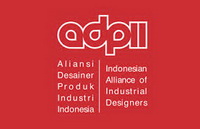Desain meja dan kursi sistem modular berbasis active learning untuk siswa sekolah dasar
Abstract
Improve of learning quality of elementary school in Indonesia are many ways. One of them is repairing table-chair as long as growing of learning method. Nowadays, active learning is one of method that improving learning quality. There are many ways in actions to realize active learning, started from curriculum repaired to study time at school. Too poor, the government forgetting one thing, that is table-chair, the product in daily using. This research intend to given argument to all of person or institution about repairing table-chair of elementary school as fit as active learning method by modular concept. Research method in this field is descriptive qualitative. Research location is Kedung District Jepara Regency Central Java, by three sample of class table-chair 6th elementary school in SD Negeri 1 Jondang, MI Matholiul Huda Bugel and SD Negeri III Menganti. The object is design of table-chair elementary school based of active learning. Data collection technique is library study, observation and interview. The data in collection tested in validity by triangulation technic. Research result is showing that table-chair in the data not representative to active learning. Generally, the table-chair is difficult to using in active learning. Table-chair design by modular concept is fit to cluster model/V group and U that ergonomic and functional, so easy to driven and support active learning.
Key words: design, elementary school table-chair, active learning, modular concept
Full Text:
PDFReferences
Fuller, R. (1989). Probiotics in man and animals. Journal of Applied Bacteriology, 66(5), 365–378. https://doi.org/10.1111/j.1365-2672.1989.tb05105.x
Grinder, M. (1991). Righting the educational conveyor belt. Portland: Metamorphous Press.
Maslow, A. H. (1968). Some educational implications of the humanistic psychologies. Harvard Educational Review, 38(4), 685–696. https://doi.org/10.17763/haer.38.4.j07288786v86w660
Muharram, A. N. (2009). Menata Furnitur di Ruang Sempit. Jakarta: Griya Kreasi.
Munandar, S. C. U. (1993). Mengembangkan bakat dan kreativitas anak sekolah : petunjuk bagi para guru dan orang tua. Jakarta: Gramedia.
N, R. M., Halim, L., & Muzammil, R. (2015). Program Kreativitas Mahasiswa (Karsa Cipta), Perancangan Kursi Mahasiswa “UNION.” Jakarta.
Nurkertamanda, D., Saptadi, S., & Herviyani, D. D. (2006). Perancangan meja dan kursi anak menggunakan metode Quality Function Deployment (QFD) dengan pendekatan Athropometri dan bentuk fisik anak. J@TI UNDIP : Jurnal Teknik Industri, 1(1). Retrieved from https://ejournal.undip.ac.id/index.php/jgti/article/view/2196
Panero, J., & Zelnik, M. (1979). Human Dimension & Interior Space : A Source Book of Design Reference Standards. New York: Whitney Library of Design.
Pauweni, M. (2009). Mengevaluasi Komposisi Tubuh. Semarang.
Purwaningrum, L., Funatsu, K., Xiong, J., Rosyidi, C. N., & Muraki, S. (2015). Effect of Furniture Weight on Carrying, Lifting, and Turning of Chairs and Desks among Elementary School Children. PLoS ONE, 10(6), e0128843. https://doi.org/10.1371/journal.pone.0128843
Saputro, F. W. (2012). Perancangan Kursi dan Meja Ruang Tamu Berbasis Kearifan Lokal dengan Metode Kansei Engineering dalam Upaya Peningkatan Nilai Ekonomis Produk Rotan di Desa Trangsan. Universitas Muhammadiyah Surakarta, Surakarta.
Suprapto. (2013). Perancangan meja-kursi yang adjustable bagi anak sekolah dasar. Techno Science, 5(2), 715–722.
Suryono, E. (2012). Rancangan Kursi Kerja Berbasis Ergonomi Untuk Mengurangi Kelelahan Pada Pekerja Pelinting Rokok Di Pt Djitoe Indonesia Tobacco Tahun 2012. Surakarta: Universitas Muhammadiyah Surakarta.
DOI: https://doi.org/10.24821/productum.v3i3.1876
Refbacks
- There are currently no refbacks.
p-ISSN 2477-7900 | e-ISSN 2579-7328

This work is licensed under a Creative Commons Attribution 4.0 International License.
Like & Follow Us










